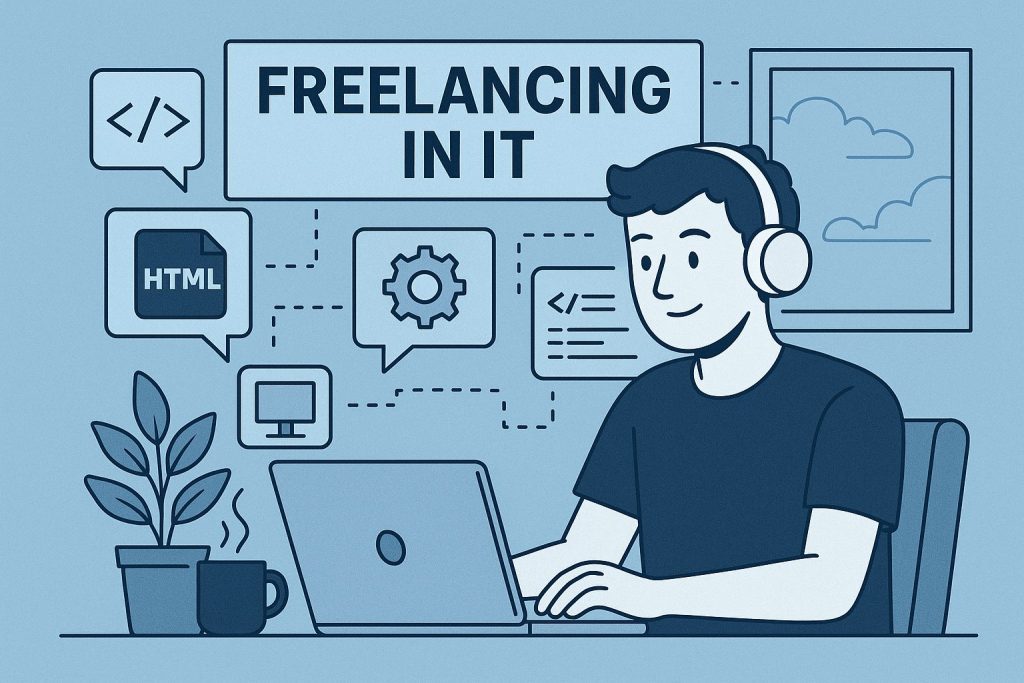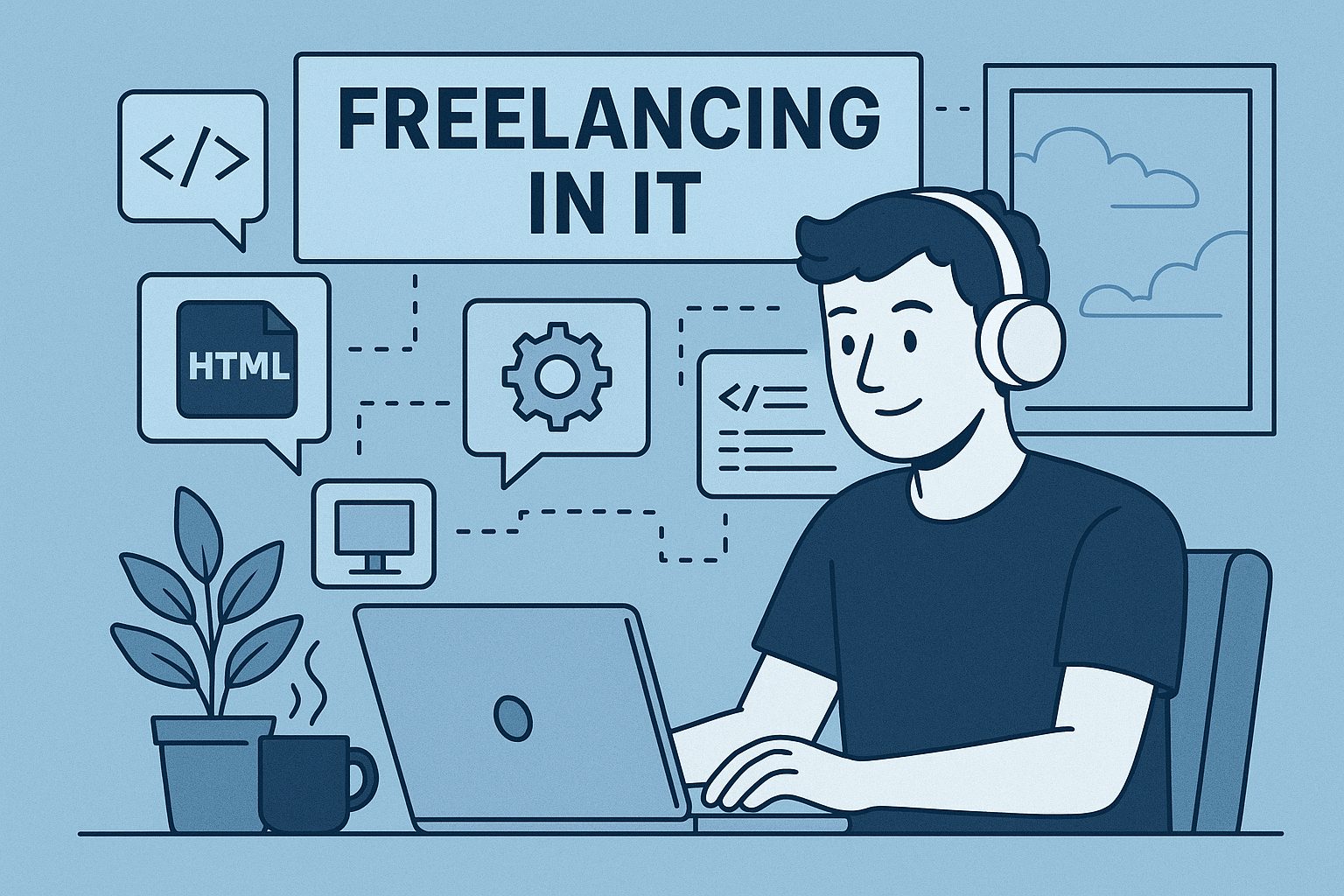
Starting a Freelancing Career in IT with Proven Skills
Starting a freelancing career in IT can feel both exciting and overwhelming. I made the transition after several years working as a full-stack software engineer for enterprise businesses and startups. While I enjoyed the challenge of building responsive web applications, working with cloud hosting, databases, and continuous integration pipelines, I realized the office routine was draining. Freelancing became the path to use the same proven skills, but with more freedom, flexibility, and direct client impact.
Why Freelancing in IT Is a Great Career Choice
Freelancing in IT has exploded in recent years because businesses are shifting to digital solutions faster than ever. Unlike traditional office roles, freelancing offers the flexibility to choose clients, projects, and working hours. For someone tired of the 9-to-5 hustle, it provides a chance to align work with lifestyle. At the same time, companies benefit from hiring experienced specialists without long-term contracts.
From my experience in full-time roles, I discovered that many businesses don’t just need developers—they need problem solvers. Whether it’s optimizing an e-commerce flow, setting up CI/CD pipelines, or migrating a database, these skills translate perfectly to freelance work. This means you can sell your skills as packaged solutions, not just hours of coding.
The beauty of freelancing in IT is the ability to focus on what makes you valuable. Instead of simply being “a software developer,” you become the expert who helps businesses launch scalable apps, optimize websites for SEO, or fix cloud hosting issues. This creates a competitive edge because you’re offering solutions, not just labor.
Turning Full Time Software Skills Into Freelance Work
Working full-time in IT teaches you problem-solving under pressure, collaboration across teams, and adapting to rapidly changing requirements. These are exactly the skills clients look for in freelancers. Having worked with startups, I know how important fast MVP development is. Meanwhile, enterprise businesses often care about process stability and scalability. Both experiences are valuable in freelancing pitches.
If you’re shifting from a job to freelancing, don’t underestimate how much weight real-world work carries. Having built products others already use gives you credibility. Instead of presenting yourself as “new to freelancing,” frame it as “experienced IT professional taking projects independently.”
Identify What IT Problems You Can Solve for Clients
You can’t market yourself as a freelancer without being crystal clear on what problems you solve. Businesses don’t hire freelancers because they enjoy outsourcing—they hire because they have a pain point they can’t solve internally. Maybe their website is too slow. Maybe their cloud setup is expensive. Or perhaps they simply don’t have the expertise for SEO-friendly frontend development.
From my personal background, I realized I had three strong pillars to market: building responsive apps, managing hosting and CI/CD, and SEO optimization. These are high-demand problems for both startups and established businesses. For example, I recently helped a company to improve their page load time by 40% simply by improving database queries and caching layers. That’s a tangible result businesses want.
Show Your Tech Skills Clearly and Be Specific
When reaching out to clients, general statements like “I know web development” won’t do much. You need to show exactly how your stack, tools, and workflows translate into results.
Specificity helps clients imagine how you’ll integrate into their workflow. For instance, you can explain how you can help a business migrate from a poorly structured PHP app into a modern Next.js application with better speed and SEO. That’s far more persuasive than saying “I build websites.”
Another effective way I demonstrate my capabilities is through small but clear examples. I’ll show a quick before-and-after screenshot of a performance optimization or a snippet of a dashboard I automated. Even without going deep into code, clients see the value created.
Build a Simple Process to Understand Client Needs
One of the biggest lessons I’ve learned is that unclear requirements lead to unhappy clients. To avoid this, I created a simple, repeatable process for every new project. Step one is a discovery call or questionnaire where I let clients explain their problems in simple language. I then translate that into a technical plan—always confirming my understanding before coding.
This approach not only saves time but also builds trust early in the relationship. Clients feel heard and valued when I ask about their business goals, not just the technical details. For example, instead of only asking “What framework do you want?” I ask, “What exact results do you want from this project?” That helps me drive the solution toward business impact.
Over time, I’ve refined a checklist: requirements, budget, timeline, and end-goal. Keeping this process structured helps me avoid scope creep and sets clear expectations right from the start.
Keep Clients Updated and Add Value After Delivery
Delivering on time is important, but clients value communication even more. During projects, I send short weekly updates with screenshots, demos, or progress notes. This not only reassures them but also keeps them invested in the work.
After completing a project, I don’t just disappear. I usually deliver a small follow-up guide—for example, explaining how to monitor hosting usage or basic SEO practices for their new site. This additional value often impresses clients and makes them return with more work.
Adding a new pitch after delivery is also a proven strategy. If I finished deploying a website, I might say: “Would you like me to set up analytics and SEO tracking so you can measure conversions?” This transforms one-time work into repeat business.
Create a Strong Online Portfolio as a Developer
A portfolio is your number one asset in freelancing—especially if you don’t have clients yet. When I started, I built a couple of personal projects like a task management app and a blog engine, just to demonstrate my technical ability and design sense. These projects showed responsiveness, API integration, and functional CI/CD pipelines.
Instead of just listing technology, I showcased the problem each project solved. For example, “This app helps teams manage remote work tasks in real-time.” That’s more engaging than “React + Node.js app.” Clients care about outcomes.
Even if it’s just a side project, make it polished. Add live demos, GitHub repos, and case-study writeups. Over time, client projects will replace your starter work, but until then, your own products clearly prove your expertise.
Network and Reach Out to Possible Freelance Clients
I usually send thoughtful, personalized messages, not generic spam. For example, if I notice a colleague’s startup has a slow-loading website, I might reach out and say: “I noticed your site has some performance issues—would you like me to help out with optimization?” That’s practical, non-pushy networking.
The key is consistency. Make a list of businesses you’d genuinely enjoy helping. Send five well-crafted outreach emails or LinkedIn messages a week. Over time, these small efforts build solid freelance opportunities.
Share Your IT Freelance Services on Social Media
Social media is free advertising if you use it wisely. I regularly post about the technologies I use, small case studies, or simple tips about hosting, SEO, and responsive design. These posts naturally attract people who either need help or know someone who does.
I recommend focusing on LinkedIn, Twitter (X), and maybe even developer communities like Dev.to. Showcase your skills as “problem solutions,” not just technical jargon. Instead of saying “I used Docker,” phrase it like “I reduced deployment time for a client from 1 hour to 10 minutes with Docker.”
Prove Your Experience by Showing Similar Projects

One of the best ways to win freelance clients is by showing them that you’ve successfully done similar projects before. When I pitch to a startup, I highlight my past experience building MVPs under tight deadlines. When I pitch to enterprise clients, I emphasize my experience in optimizing infrastructure and maintaining stability.
Clients want to reduce risk. By showing that you’ve solved the same problems before, you position yourself as a safe and trustworthy choice. I often include short “mini case studies” in my proposals that outline the challenge, solution, and final result.
Even if the projects weren’t done as a freelancer, your previous experience is still powerful. Remember: clients hire results, not job titles. So if you’ve done it in a full-time role, it’s still valid proof of expertise.
Transitioning into freelancing in IT is about repackaging your existing skills into clear, client-focused solutions. You don’t have to start from scratch—you already have the experience and proven results from full-time roles. By identifying specific problems you solve, creating a client-friendly process, and showcasing your work online, you’ll quickly build momentum in the freelance market. Consistency in networking, outreach, and delivering value beyond expectations will set you apart. If you’re ready to exit the office hustle and take control of your career, IT freelancing is one of the strongest paths forward.

Leave a Reply